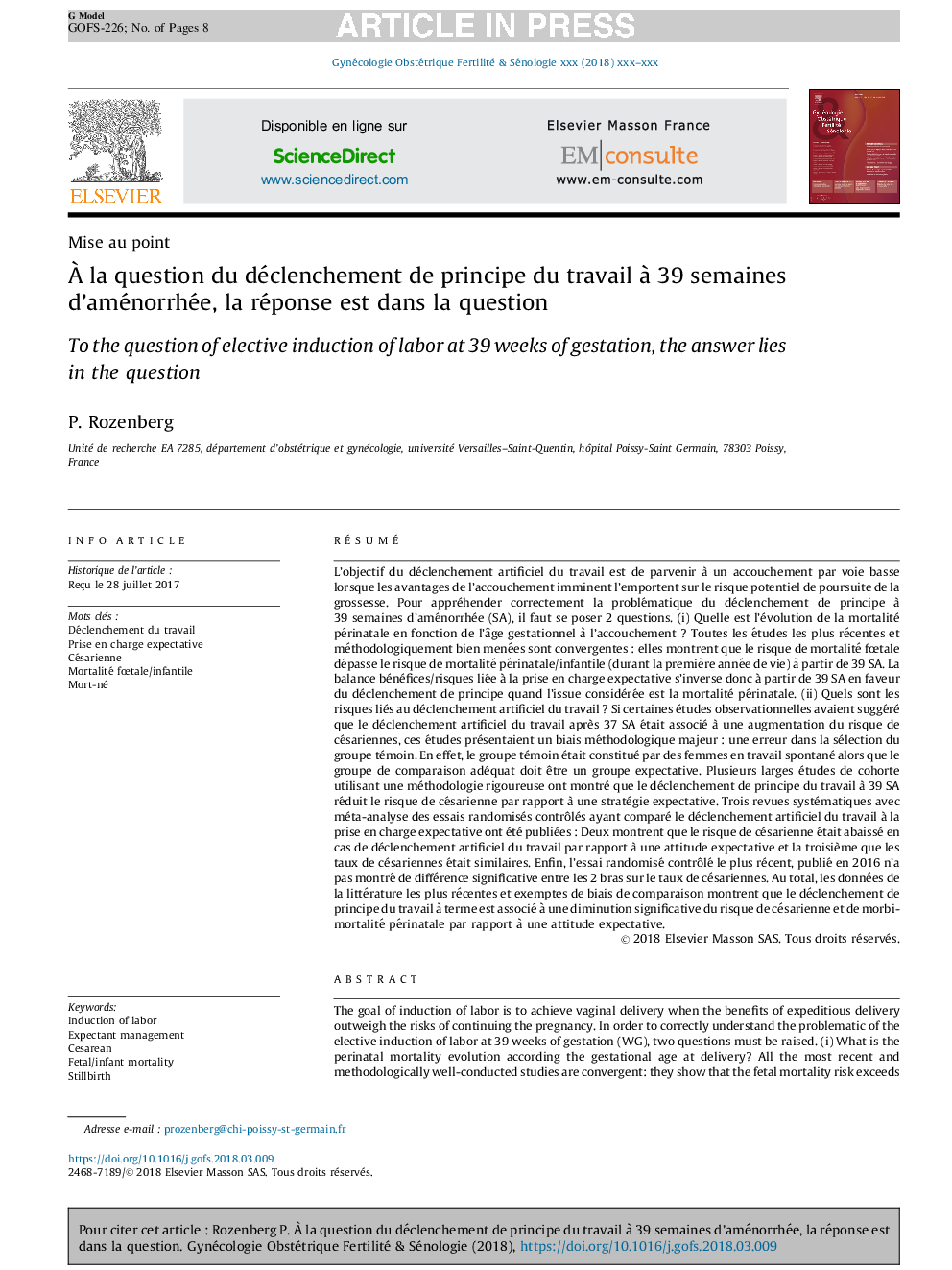| کد مقاله | کد نشریه | سال انتشار | مقاله انگلیسی | نسخه تمام متن |
|---|---|---|---|---|
| 8926225 | 1643665 | 2018 | 8 صفحه PDF | دانلود رایگان |
عنوان انگلیسی مقاله ISI
à la question du déclenchement de principe du travail à 39 semaines d'aménorrhée, la réponse est dans la question
دانلود مقاله + سفارش ترجمه
دانلود مقاله ISI انگلیسی
رایگان برای ایرانیان
کلمات کلیدی
موضوعات مرتبط
علوم پزشکی و سلامت
پزشکی و دندانپزشکی
زنان، زایمان و بهداشت زنان
پیش نمایش صفحه اول مقاله

چکیده انگلیسی
The goal of induction of labor is to achieve vaginal delivery when the benefits of expeditious delivery outweigh the risks of continuing the pregnancy. In order to correctly understand the problematic of the elective induction of labor at 39 weeks of gestation (WG), two questions must be raised. (i) What is the perinatal mortality evolution according the gestational age at delivery? All the most recent and methodologically well-conducted studies are convergent: they show that the fetal mortality risk exceeds the perinatal/infant (during the first year of life) mortality risk from 39 WG. The benefit/risk balance related to the expectant management is therefore reversed from 39 WG in favor of the elective induction of labor when the considered issue is the perinatal mortality. (ii) What are the associated risks with elective induction of labor? While some observational studies suggested that the elective induction of labor after 37 WG was associated with an increased risk of cesarean sections, these studies presented a major methodological bias: an error in the control group selection. Indeed, the control group consisted of women in spontaneous labor, whereas the appropriate comparison group must be an expectant management group. Several large cohort studies using a rigorous methodology have shown that elective induction of labor at 39 WG reduces the cesarean section risk compared to an expectant management. Three systematic reviews with meta-analysis of randomized controlled trials comparing induction of labor with expectant management were published: two showed that the cesarean section risk was lowered with the induction of labor compared to an expectant management and the third that the cesarean section rates were similar. Finally, the most recent randomized controlled trial, published in 2016, showed no significant difference between the 2 arms in the cesarean section rate. In all, the most recent literature data, free from comparative bias, show that elective induction of labor at term is associated with a significant reduction in the cesarean section risk and perinatal morbidity and mortality compared to an expectant management.
ناشر
Database: Elsevier - ScienceDirect (ساینس دایرکت)
Journal: Gynécologie Obstétrique Fertilité & Sénologie - Volume 46, Issue 5, May 2018, Pages 481-488
Journal: Gynécologie Obstétrique Fertilité & Sénologie - Volume 46, Issue 5, May 2018, Pages 481-488
نویسندگان
P. Rozenberg,